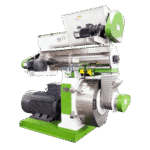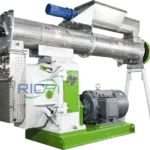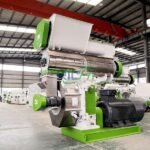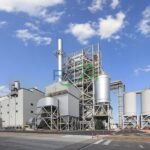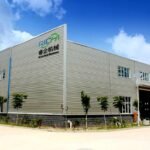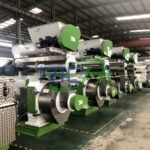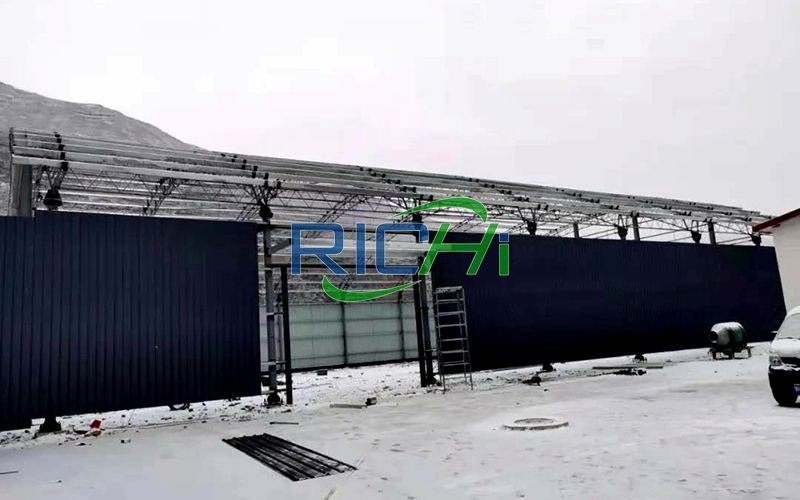In the ever-evolving landscape of sustainable agriculture and environmental stewardship, the demand for organic fertilizers has witnessed a remarkable surge. As consumers become increasingly conscious of the impact of conventional farming practices on soil health and food quality, the need for eco-friendly and nutrient-rich fertilizers has never been greater.
Recognizing this growing demand, many entrepreneurs and businesses are exploring the potential of large-scale organic fertilizer production projects. These ambitious undertakings not only contribute to the development of sustainable agricultural practices but also present lucrative economic opportunities and the potential for significant environmental benefits.
However, embarking on a large-scale organic fertilizer production project requires careful planning, execution, and adherence to industry best practices. In this article, we’ll explore the key steps and considerations involved in successfully carrying out such a project, ensuring optimal efficiency, profitability, and environmental responsibility.
Step 1: Conduct a Comprehensive Feasibility Study
Before committing substantial resources to a large-scale organic fertilizer production project, it is crucial to conduct a comprehensive feasibility study. This study should encompass market analysis, raw material availability assessments, site selection evaluations, and financial projections.
Market analysis involves understanding the current and projected demand for organic fertilizers in your target regions, as well as analyzing the competitive landscape and identifying potential market niches or unique selling propositions.Assessing the availability and cost of raw materials, such as animal manures, plant residues, and other organic waste streams, is essential to ensure a consistent and cost-effective supply chain.
Additionally, evaluating potential sites for the production facility should consider factors like proximity to raw material sources, transportation infrastructure, and environmental regulations.Finally, detailed financial projections should be developed, taking into account capital expenditures, operational costs, revenue streams, and potential financing options. This analysis will help determine the project’s overall viability and guide decision-making processes.
Related post: https://www.richipelletmachine.com/organic-fertilizer-production-plant-cost/
Step 2: Develop a Comprehensive Business Plan
Armed with the insights from the feasibility study, the next step is to develop a comprehensive business plan. This document should outline the project’s objectives, strategies, and operational details, serving as a roadmap for successful implementation and ongoing management.
The business plan should include detailed descriptions of the proposed production processes, equipment requirements, quality control measures, and regulatory compliance strategies. Additionally, it should address marketing and distribution plans, as well as strategies for minimizing environmental impact and promoting sustainability.
A well-crafted business plan not only serves as a guiding document for the project team but also plays a crucial role in securing financing from investors, lenders, or government agencies.
Step 3: Secure Necessary Permits and Approvals
Large-scale organic fertilizer production projects are subject to various environmental regulations and permitting requirements. It is essential to identify and obtain all necessary permits and approvals from relevant local, state, and federal authorities before commencing operations.
These may include environmental impact assessments, air and water discharge permits, zoning approvals, and certifications for organic production standards. Engaging with regulatory agencies early in the process can help streamline the approval process and ensure compliance from the outset.
Step 4: Establish Robust Supply Chains and Partnerships
The success of a large-scale organic fertilizer production project hinges on the establishment of robust supply chains and strategic partnerships. Securing reliable sources of raw materials, such as animal manures, crop residues, and organic waste streams, is crucial for maintaining consistent production levels.
Developing partnerships with local farmers, agricultural cooperatives, and waste management facilities can provide access to a steady supply of raw materials while also contributing to the circular economy and sustainable waste management practices.
Additionally, establishing relationships with distributors, retailers, and end-users can facilitate efficient product distribution and ensure a stable demand for the organic fertilizers produced.
Step 5: Implement Advanced Production Technologies
To achieve optimal efficiency and product quality, it is essential to implement advanced production technologies and processes. This may involve investing in specialized equipment for composting, pelletizing, or granulating organic materials, as well as incorporating automation and control systems for precise monitoring and adjustment of process parameters.
Leveraging innovative technologies, such as anaerobic digestion or vermicomposting, can further enhance the nutrient content and overall quality of the organic fertilizers produced. Additionally, incorporating sustainable practices, such as waste heat recovery and renewable energy integration, can contribute to the project’s overall environmental responsibility.
Step 6: Establish Robust Quality Control and Monitoring Systems
Ensuring the consistent quality and safety of organic fertilizers is paramount for maintaining consumer trust and regulatory compliance. Establishing robust quality control and monitoring systems is essential for achieving this objective.This may involve implementing rigorous sampling and testing protocols, maintaining detailed records and documentation, and adhering to industry standards and regulations regarding product specifications, labeling, and storage.Additionally, implementing traceability systems can help track the origin and processing of raw materials, enabling rapid identification and resolution of any potential issues or contamination concerns.
Step 7: Develop Effective Marketing and Distribution Strategies
With a high-quality organic fertilizer product and a robust production facility in place, the next step is to develop effective marketing and distribution strategies. This may involve leveraging digital marketing channels, attending industry events and trade shows, and establishing strategic partnerships with retailers and distributors.Emphasizing the environmental benefits, nutrient-rich composition, and sustainable production practices of the organic fertilizers can resonate with eco-conscious consumers and differentiate the products in a competitive market.
Additionally, exploring opportunities for product diversification, such as developing specialized formulations for specific crop types or niche applications, can further enhance the project’s competitiveness and profitability.By following these steps and adhering to industry best practices, entrepreneurs and businesses can successfully carry out large-scale organic fertilizer production projects, contributing to the growth of sustainable agriculture while capitalizing on the increasing demand for eco-friendly and nutrient-rich fertilizers. However, it is crucial to remain vigilant and adaptable, continuously monitoring market trends, regulatory changes, and technological advancements to ensure the long-term success and sustainability of the project.
For details please contact: pellet line
WhatsApp:86 138 3838 9622
Email:enquiry@richipelletmachine.com
